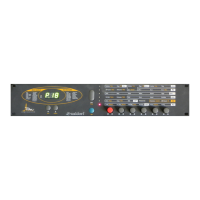MIDI Channel
This is a very important element of most messages. A receiver can only respond to
incoming messages if its receive channel is set to the same channel as the one the sender is
using to transmit data. Subsequently, the sender can address specific receivers individually.
MIDI Channels 1 through 16 are available for this purpose.
MIDI Clock
The MIDI Clock message determines the tempo of a piece of music. It serves to
synchronize processes based on time.
Modulation
A modulation influences or changes a sound-shaping component via a modulation source.
Modulation sources include envelopes, LFOs or MIDI messages. The modulation
destination is sound-shaping component such as a filter or a VCA.
Note on / Note off
This is the most important MIDI message. It determines the pitch and velocity of every
generated note. The time of arrival is simultaneously the start time of the note. Its pitch is
derived from the note number, which lies between 0 and 127. The velocity lies between 1
and 127. A value of 0 for velocity is similar to „Note Off“.
Panning
The process of changing the signal's position within the stereo panorama.
Pitchbend
Pitchbend is a MIDI message. Although pitchbend messages are similar in function to
control change messages, they are a distinct type of message. The reason for this distinction
is that the resolution of a pitchbend message is substantially higher than that of a
conventional Controller message. The human ear is exceptionally sensitive to deviations in
pitch, so the higher resolution is used because it relays pitchbend information more
accurately.
Program Change
These are MIDI messages that switch sound programs. Program numbers 1 through 128 can
be changed via program change messages.
Release
An envelope parameter. The term "Release" describes the descent rate of an envelope to its
minimum value after a trigger is terminated. The Release phase begins immediately after the
trigger is terminated, regardless of the envelope's current status. For instance, the Release
phase may be initiated during the Attack phase.
Resonance
Resonance is an important filter parameter. It emphasizes a narrow bandwidth around the
filter cutoff frequency by amplifing these frequencies. This is one of the most popular
methods of manipulating sounds. If you substantially increase the resonance, i.e to a level
where the filter begins self-oscillation, then it will generate a relatively clean sine
oscillation.
Sustain
An envelope parameter. The term "Sustain" describes the level of an envelope that remains
constant after it has run through the Attack and Decay phases. Sustain lasts until the trigger
is terminated.
72
User’s Manual Pulse • PulsePlus

